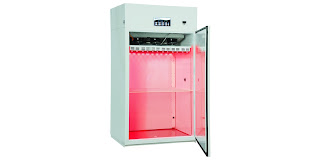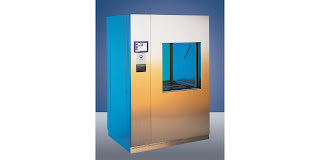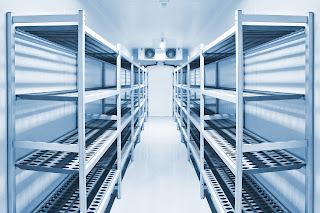 |
The usage pattern of a cold space will determine how
best to reduce the risk from mechanical failure.
Image courtesy of Percival Scientific |
In
Part One of this series, what may define failure in cold room or refrigerator operation was discussed, giving the reader a starting point in evaluating whether to incorporate a backup refrigeration system into a cold space design. Operational failure can, and does, arise from countless sources. Some can be expected and anticipated, others not. Regardless of the source of failure, though, having a backup plan in place can help avoid damage to cold stored materials in all but the most catastrophic of events.
Once a decision is made to establish a contingency or backup plan, the form of the backup strategy needs to be addressed.
All backup strategies have a common goal of keeping the cold material cold. A simple clear goal, but with numerous ways it can be achieved, and each option may provide its own array of additional benefits or attributes which make it more suitable for a particular facility, budget, or other constraint.
"Twins" - An obvious backup cooling strategy is to provide a copy of whatever system is required for full range operation of the cold space. While this option offers an easy decision, it is likely to be one of the more costly ways to proceed. Proper design of a cooling system is based upon a load calculation that accounts for all the heat gain to which the cold space will be exposed. The sum of the loads will determine the size of the cooling system. Some applications that require close temperature control, or are subject to excessive door opening time, large warm mass additions, fresh air induction, dehumidifier operation, or a host of other heat sources could have comparatively large cooling systems. Purchasing and installing a full capacity redundant cooling system, in these cases, should be considered only when full operational capability of the space is the only option. When one system fails, the backup can maintain the space conditions without any change needed to the way in which the space is used.
Relocate - When the amount of stored material is manageable and a suitable space can be identified, it may be most effective to maintain unused cold space that is designated for use in the case of equipment failure. This likely will apply best to installations of refrigerated cabinets (refrigerators), where stored materials can be easily moved from the failing refrigerator to the backup space. The backup space should be kept in operation continuously, so its proper operation is confirmed. This backup scheme may be well suited to facilities with numerous refrigerated cabinets in use. The common backup cold space serves multiple users. A challenge specific to this plan is keeping the backup cold space from being used as normal cold space by any user for any number of reasons.
Full Load / Base Load - If a cold space is to have two cooling systems, an alternate to the "Twins" scheme can be considered. An analysis of space usage may reveal patterns that can be adjusted in case of a failure of the primary system. If a change in space usage can be enforced during periods when the primary cooling system is inoperable, a smaller capacity, lower cost cooling unit can be incorporated as the backup unit. This option can impose some additional control challenges, but also some potential energy saving benefits, which will be discussed in the next installment.
Half Load / Full Load - If there are substantial lengths of time during which the cold space faces a low and stable heat load, another operating scheme may be considered for providing backup cooling. The full heat load component of the design is split evenly between two cooling units. One of the cooling units will be sufficient to maintain cold space temperature during most of the day, with the second unit available to provide additional capacity when needed. The second unit also serves as a backup in case the primary fails. This scheme will require adjustment to room usage in the case of failure, similar to that of the Full Load / Base Load plan previously described.
There are numerous other risk reduction schemes that can be developed to deal with the potential of cooling system mechanical failure. Some schemes may provide energy savings during normal operation, as well. A key element of real risk reduction and maximizing the benefit of the additional equipment cost lies in the control system. The controls need to be capable of detecting failure and taking appropriate action in response to a large matrix of possible conditions. The takeaway from this article is that there is more than one solution to the challenge. Approach the problem with an analysis of how the cold space is utilized, before selecting equipment. The subject can be more complex than it appears, especially to those unfamiliar with control systems. Enlist the help of
experienced equipment specialists to help identify the risks, assess cold space usage, and develop an effective plan.























